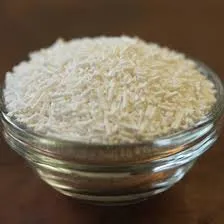
Current Trends in Isopropyl Alcohol Pricing and Market Dynamics Analysis
The Price Dynamics of Isopropyl Alcohol An Overview
Isopropyl alcohol (IPA), commonly known as isopropanol or rubbing alcohol, has become an essential chemical in various industries, including pharmaceuticals, cosmetics, and cleaning products. With its versatility and effectiveness as a solvent and disinfectant, understanding the price dynamics of isopropyl alcohol is crucial for manufacturers, retailers, and consumers alike.
Market Demand and Applications
The surge in demand for isopropyl alcohol is largely attributed to its widespread applications. In the pharmaceutical sector, IPA is vital for preparing medicines, sanitizers, and antiseptics. Recent global health crises have further fueled its demand as hygiene practices intensified, leading to an unprecedented upsurge in consumption. The beauty and personal care industries also rely heavily on isopropyl alcohol, using it as a formulation ingredient in products ranging from hand sanitizers to skin cleansers and fragrances.
In industrial applications, isopropyl alcohol serves as a solvent for oils, resins, and various organic compounds, making it invaluable in manufacturing coatings, adhesives, and cleaners. This multiplicity in applications contributes to a fluctuating market price dependent on demand shifts.
Supply Chain Influences
The price of isopropyl alcohol is influenced by numerous factors, including raw material costs, production capacity, and logistical challenges. The primary raw materials for IPA production include propylene, which is derived from petroleum. Thus, fluctuations in crude oil prices directly impact the production costs of isopropyl alcohol. Moreover, any disruptions in the supply chain, be it due to geopolitical tensions, weather-related disasters, or pandemics, can lead to shortages and price spikes.
isopropyl price

The COVID-19 pandemic serves as a pertinent example of how supply and demand dynamics can drastically change the landscape of chemicals like isopropyl alcohol. In early 2020, the sudden surge in hygiene-related products led to a skyrocketing demand, while production facilities were often limited in their capacity due to health regulations and labor shortages. This imbalance resulted in a dramatic increase in prices, with some markets reporting price hikes of over 300%.
Current Trends and Future Outlook
As of 2023, the price of isopropyl alcohol continues to be shaped by evolving trends. While the immediate effects of the pandemic have waned, the shift towards enhanced hygiene practices and the increased focus on health and wellness persist, maintaining a steady demand for IPA. Moreover, industries are increasingly looking for sustainable alternatives, exploring bio-based and eco-friendly production methods, which may influence market prices in the coming years.
Additionally, economic conditions, such as inflation and changes in consumer buying behaviors, play a vital role in shaping the price trajectory of isopropyl alcohol. As countries recover from the pandemic's economic impacts, fluctuations in consumer spending and manufacturing outputs will likely affect demand and pricing structures.
Conclusion
In conclusion, the price of isopropyl alcohol is a complex interplay of demand, supply chain dynamics, and broader economic trends. The compound's essential role in various industries ensures that it will remain a focal point for stakeholders involved in its production and distribution. By closely monitoring market trends and remaining adaptable to changes in demand and supply, businesses can better navigate the fluctuating landscape of isopropyl alcohol pricing. As we move forward, a combination of innovative practices and sustainable approaches may define the future of isopropyl alcohol availability and pricing, positioning this vital chemical in alignment with the evolving demands of the global market.
-
Pure Sodium Dichloroisocyanurate Dihydrate | Powerful DisinfectantNewsAug.29,2025
-
Industrial Chemicals: Quality & Purity for Every IndustryNewsAug.28,2025
-
Nitrile Rubber Honoring Strict Production StandardsNewsAug.22,2025
-
Aspartame Ingredients Honoring Food Safety ValuesNewsAug.22,2025
-
Fertilizer for Balanced Plant NutritionNewsAug.22,2025
-
Cyanide Gold Processing with High Purity AdditivesNewsAug.22,2025
-
Formic Acid in Textile Dyeing ApplicationsNewsAug.22,2025
Hebei Tenger Chemical Technology Co., Ltd. focuses on the chemical industry and is committed to the export service of chemical raw materials.
-

view more DiethanolisopropanolamineIn the ever-growing field of chemical solutions, diethanolisopropanolamine (DEIPA) stands out as a versatile and important compound. Due to its unique chemical structure and properties, DEIPA is of interest to various industries including construction, personal care, and agriculture. -

view more TriisopropanolamineTriisopropanolamine (TIPA) alkanol amine substance, is a kind of alcohol amine compound with amino and alcohol hydroxyl, and because of its molecules contains both amino and hydroxyl. -

view more Tetramethyl Thiuram DisulfideTetramethyl thiuram disulfide, also known as TMTD, is a white to light-yellow powder with a distinct sulfur-like odor. It is soluble in organic solvents such as benzene, acetone, and ethyl acetate, making it highly versatile for use in different formulations. TMTD is known for its excellent vulcanization acceleration properties, which makes it a key ingredient in the production of rubber products. Additionally, it acts as an effective fungicide and bactericide, making it valuable in agricultural applications. Its high purity and stability ensure consistent performance, making it a preferred choice for manufacturers across various industries.





